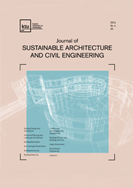Utilisation of Copper Slag Waste and Heavy-Weight Aggregates for Production of Pre-cast Shielding Concrete Elements
Utilisation of Copper Slag Waste and Heavy-Weight Aggregates for Production of Pre-cast Shielding Concrete Elements
Author(s): Wojciech Kubissa, Roman Jaskulski, Pui-Lam Ng, Jiajian ChenSubject(s): Energy and Environmental Studies
Published by: Exeley Inc.
Keywords: amphibolite; barite; basalt; copper slag; heavy-weight aggregate; magnetite; shielding concrete;
Summary/Abstract: Concrete as a versatile building material can provide physical and biological shielding against ionizing radiation. In addition to nuclear reactor covers, facilities requiring radiation protection are radiological and X-ray laboratories in hospitals or health centres. The function of radiation protection can be met by heavy-weight concrete, whose shielding properties are largely derived from the high-density aggregates. One of the possible construction methods of shielding walls in healthcare buildings is the use of pre-cast concrete blocks. For this purpose, research on a concrete having a density in the air-dry state of higher than 3200 kg/m3 using barite, magnetite and basalt as coarse aggregate and copper slag waste (from by-product of the process of copper extraction by smelting) as fine aggregate has been performed. The copper slag waste has been used, among others, as an abradant in the surface sandblasting process but after such usage it is considered to be a waste and as indicated by pilot research, it can be a good substitute for sand in concrete. Mechanical properties, water absorption and sorptivity of heavy-weight concrete so produced were compared with reference concrete prepared with crushed amphibolite as coarse aggregate and quartz sand as fine aggregate.
Journal: Journal of Sustainable Architecture and Civil Engineering
- Issue Year: 22/2018
- Issue No: 1
- Page Range: 39-47
- Page Count: 9
- Language: English

